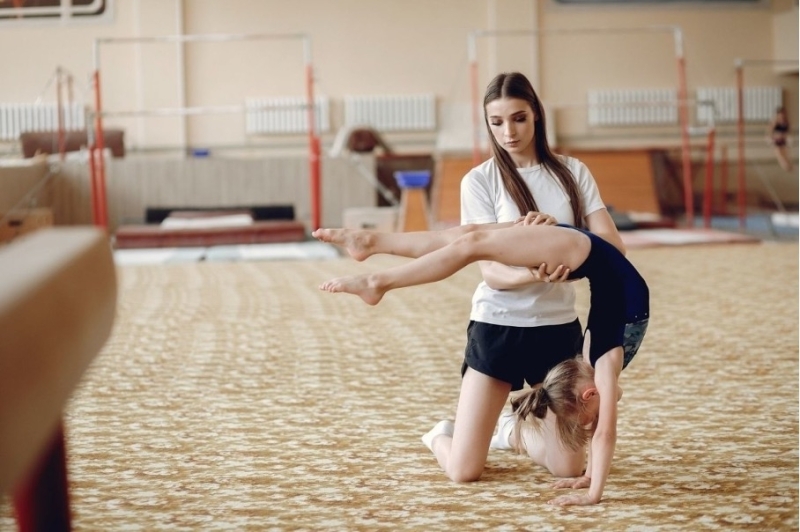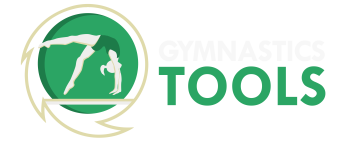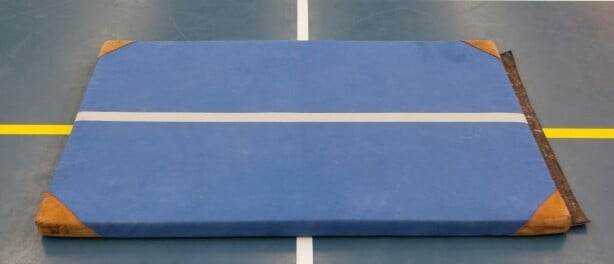In this blog, I will give you a few tips that you can use when you are taking your gymnastics exam. Of course, it differs which gymnastics course you are following. I myself have followed the PE training and the level 3 and level 4 training. I have also taken quite a few exams myself. I hope to be able to give you some tips so that you will be optimally prepared to take your exam for your gymnastics training.
What you will learn
- How to prepare optimally
- What things to look out for to ensure you can pass your exam
- Practical tips for the exam
- The points that make sure you have the best possible chance of passing the exam.
Checklist: prepare for exam
How do you prepare for your exam so that you are optimally prepared?
Start with a portfolio check
Always check whether you have all the lesson preparations you need to prepare. Other courses also call them PVOs, the practical training assignments or assessments or a combination of these. So always check that your portfolio is in order and correct so that the examiner can check it properly. But also make sure that you can provide all the points when you go to the exam.
Also check in advance what requirements you have to fulfil
A level 3 course, for example, is different from an PE course. Each course has different criteria and different requirements. An examiner must always look at the PVBs to see which requirements a student must satisfy. It is a good idea to go through these beforehand so that you know what you will be assessed on.
Material check
With your lesson before your exam, you are of course dependent on the materials you are going to use, so also check that you have everything at your disposal on the day of your exam.
Back-up plan check
If, for example, there are not enough gymnasts present during your lesson, make sure you have a back-up. So that you can quickly call someone who can step in. So that you don't have the chance of having too few participants for your lesson. Most exams require a minimum number of students. It would be a shame if you have too few students at the time of your exam. The same applies to the materials, for example. Make sure you have enough at your disposal. What do you do, for example, if your colleague in the next room has used some materials? How do you deal with this?

Tips for the exam
- Be there on time. It is of course important to always be on time. Make sure you are always on time when your exam is taken. This way you will have less stress and you will be well prepared.
- Avoid distractions during the gymnastics lesson. Make sure, for example, that you put the trampolines aside, that you don't have loose material hanging around in the lesson. But also that your students are not distracted and that they are focused on you as a teacher. This is how it goes best during your exam.
- A mistake is not the end. This is also good to know. Many students become very nervous the moment they make a mistake. You can't give a lesson that is completely perfect, so you will hardly ever score an A. There will always be a mistake, but it is important that you make it. There will always be a mistake, but it's important that you notice it and do something with it during the lesson.
- It is better to act/adapt than to do nothing. The moment you notice that something is not going well, you better make sure that you react to it. Adjust to it, and don't think "I'll just let it pass and hope I'll make it after all". So a mistake is not bad, but make sure you anticipate it and adjust it.
- Safety always comes first. Safety is one of the most important things that an examiner looks out for because, of course, they want the students to all get out of the classroom in one piece and return to their parents.
The evaluation interview
After you have taken your exam, there is usually an evaluation interview. In case your exam did not go so well, you can often make up for it in the interview. By explaining how you approached certain things and what you would do differently in the future, for example.
- Admitting that you are nervous is allowed. It is also good to know that it is not a problem to be nervous and that it is okay to admit it. This also ensures that you are transparent and that the examiner can take it into account if necessary. It is not that you will get better marks because of it, but it can be understood.
- Nothing is wrong.
- Most examiners ask a lot of questions. As a student, when you are asked a question you may think "Did I do it right?", but an examiner wants to know why you did something and he wants to know if you can substantiate your actions. So it is not a foregone conclusion that something is wrong, not even when an examiner asks you a question, but you should see it as a curious examiner who just wants to know why you have chosen certain things. That is always good to remember.
Basic principles
Here are a few principles that can help you pass your exam. These are some of the points that an examiner will generally look at. And they will influence your final grade.
Explanation:
TPA rule. You probably know this one: Talk - Picture - Act. This is not a fixed order, it can also be in a different order. This can vary from lesson to lesson. But the point is that during your exam, you should at least use all three when you give an explanation and always use an example. Some students sometimes forget that they have to give an example. This is one of the important points that you must always comply with during an exam and, in any case, during all the lessons you give.
Give instruction:
How do you give an instruction? You may have heard of the 6 W's. These are 6 different points by which you give instruction in a lesson.
- Who
- What
- Where
- When
- Which way
- What next?
The last one is the most important one, especially you have to remember it well. Especially when, for example, you give instructions to build up or break down the materials. Because what happens if you don't tell a child what to do next? There is a big chance that they will play in the lesson. So where you have a few children running around in your lesson while you are building up. That, of course, creates unsafe situations. As I already mentioned, safety is one of the most important points in an exam. So make sure you tell them what to do next. For example, when they have finished laying down a mat, they should know that they have to go back to sitting on the yellow line. So always indicate what to do next.
This is also one of the standard lists that we keep as examiners when we conduct an exam. So all the W's are generally covered when a student gives instruction. Afterwards, always check whether you have indicated what they should do next. See this for yourself as bonus points that you may be able to take away, teach yourself to always tell the students what to do next.
Additional tips
- Always have the students sit down during your explanation. When students are seated, they are much more focused than when they are standing. You can test this in your own lessons, so if you make the students sit, they will automatically be much calmer than if you make them stand. This will very quickly help you to take your exam in a much calmer way.
- Inform the students. Many students forget this during an exam. Of course you have your exam, but it can also be an exciting day for the students. After all, they are the ones helping you to pass your exam. So inform them what you will be doing that day and what those strange people will be doing, that they will be assessing you.
- Practice mounting and dismounting. This is one of the things that many students fail at. For example, that mounting and dismounting takes too long or that it is unsafe, that the instruction is not good. It is therefore very good to practise this often. Practice it with your course counsellor and make sure you can do it quickly and always in the right and safe way.
- Ensure a high lesson intensity. If pupils move more they have fewer distractions. If there are fewer distractions, the lesson will be safer and they will learn more. Both safety and learning are two important points that play a part in an exam with your assessment and also the intensity for it.
More tips?
I hope these exam tips have helped you and that you are optimally prepared to take your exam. If you need more tips, we have several free downloads on our website.
We also have a platform membership for trainers. This allows trainers to prepare their lessons very quickly. There are a lot of videos and, for example, teaching aids and lesson plans, so everything that can help them to prepare their lessons quickly.
Finally, we also have various training and practice videos on our Youtube Channel!
In any case, if you have your exam soon, I wish you the best of luck and I hope you will be able to take these tips on board for your exam!






